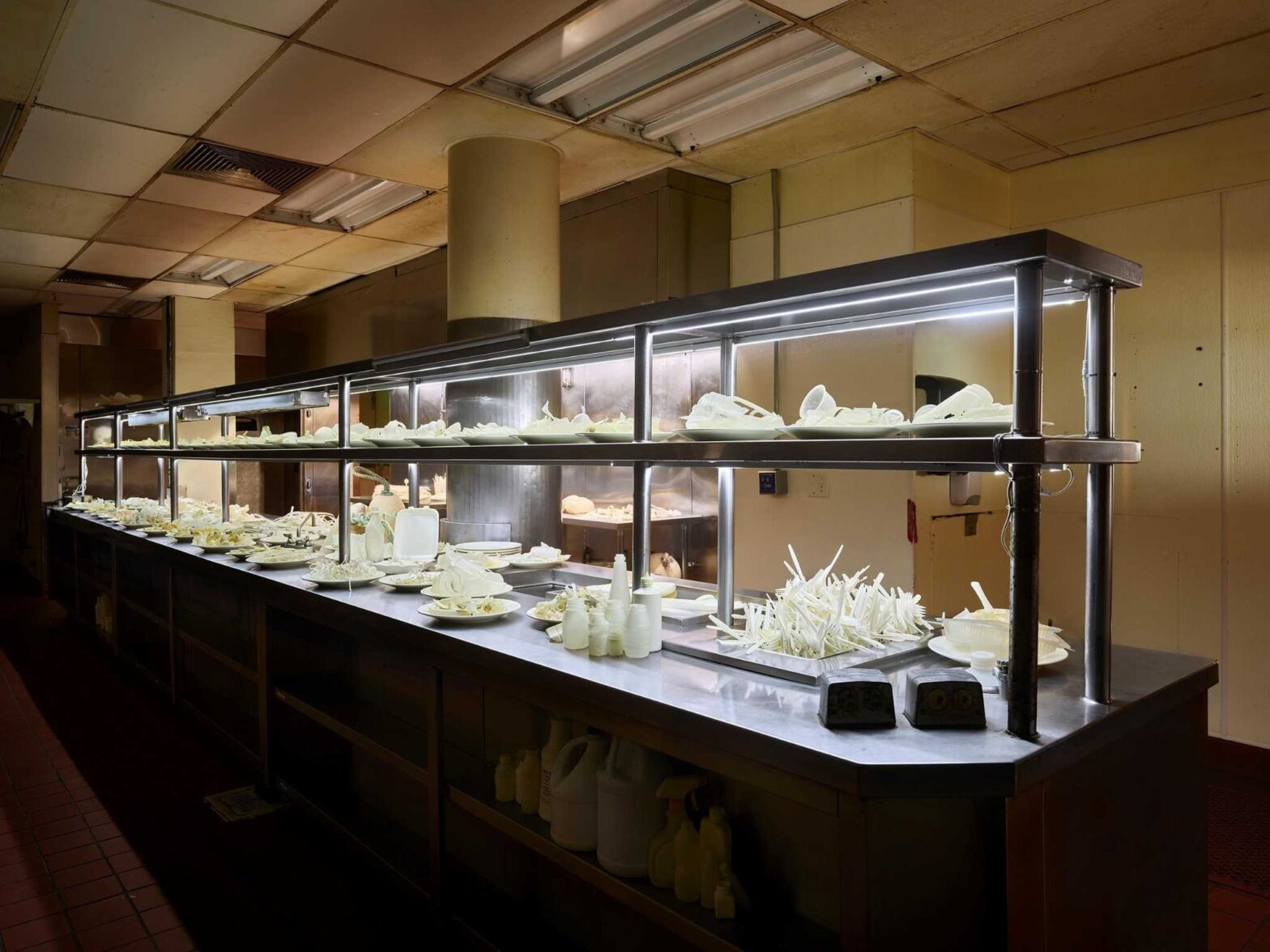
Sea levels may be rising, but Ana Teresa Fernández and her bucket brigade are doing what they can to combat it.
Forming a 200-yard human chain on Ocean Beach, they drew 170 gallons out of the surf, hauled the sloshing saltwater off the beach and up to the old Cliff House restaurant, where it was carried into the dining room and muscled up a ladder to be poured into seven clear cylinders, all six-feet tall.
“It was a lot of fricking work. For the next three days I couldn’t lift my arms,” said Fernández, at the opening of “Lands End,” a provocative environmental art installation curated by the For-Site Foundation. Fernández’s contribution to the group show is called “On the Horizon. ” The seawater cylinders are intended to show exactly what a sea-level rise of six feet will look like.
“Kids on my crew were complaining about their arms being tired,” said Fernández, who had gathered 30 volunteers to wade into the cold water ahead of the free exhibition’s opening Saturday. “I told them sometimes art is painful.”
Not as painful as heat waves and hurricanes, however — and that is the point of “Lands End,” which involves 27 artists from around the world.
“We want to bring visitors’ attention to the very complex conversation around climate change,” said For-Site founder Cheryl Haines, noting that the show opened during COP26, the international climate conference in Glasgow. “We shouldn’t just leave this to government and industry to solve. There is also an individual responsibility to affect change in our own lives.”
“Lands End” is the first For-Site exhibition in four years and came about on offer from the National Park Service to activate public space that is available to lease to a long-term restaurant tenant. The agency offered up the entire building at Lands End, formerly called the Cliff House — 75,000 square feet on two levels including the kitchen, walk-in store rooms and the dining rooms with their spectacular view of Seal Rock and the crashing waves.
The space is free and open-ended until a lease is signed. For-Site jumped on it, greatly reducing its own prep time. Its installations are complex and usually take a year minimum to mount.
“We pulled this off in five months. Unprecedented,” announced Haines while standing atop a bench at the ribbon cutting for “Lands End.” A brass quartet from the Golden Gate Park Band provided atmospheric accompaniment.
The budget was $1 million, all raised from For-Site’s benefactors, with only a small fraction dedicated to travel for the artists. To have them flying in from all over with the attendant use of jet fuel would be hypocritical, the organizers thought, so many artists either shipped existing work already constructed, or with directions for construction.
Andy Goldsworthy, perhaps the most famous artist in For-Site’s stable of contributors, sent instructions for his piece, “Geophagia”, from his studio in Penfont, Scotland. Staff was delegated to assemble white clay tabletops for the empty vinyl booths and unused dining tables in the upper dining room. Already the slabs are cracking and separating, with pieces falling onto the floor, a metaphor for the ongoing California drought.
In the adjacent kitchen, Point Reyes artists Richard Lang and Judith Selby Lang collected plastic debris on Kehoe Beach near Inverness and turned it into an assembly line of meals on plates awaiting delivery to Goldsworthy’s clay tables. The piece is titled “for here or to go” and it is so realistic, that some visitors to the opening mistook it for the lunch being served.
It was intentional: Fish eat the plastic and humans eat the fish, so we will end up eating the plastic one way or the other.
On the Horizon artist Fernández lives along the Great Highway and has previously mounted her water-filled pillars at Ocean Beach for one-day exhibits. Her piece at the Cliff House earned prime real estate in the lower dining room, where it seems suspended over the surf. A visitor can look through a glass cylinder and through the plate glass window behind it and see Seal Rock refracted in the water at eye-level. It’s the right place for contemplating the rising seas.
There will be plenty of space for doing it because only 49 visitors will be allowed at a time into the show, inside a facility that can hold hundreds. Timed-entry ticket reservations are recommended.
Fernández has not decided what to do with the sea water after the exhibition closes on March 27, 2022. She may call on her 30 volunteers to form a reverse bucket brigade.
“It is the people that make the piece,” she said. “They put the life into these pillars.”
Sam Whiting is a San Francisco Chronicle staff writer. Email: swhiting@sfchronicle.com. Twitter:@samwhitingsf

